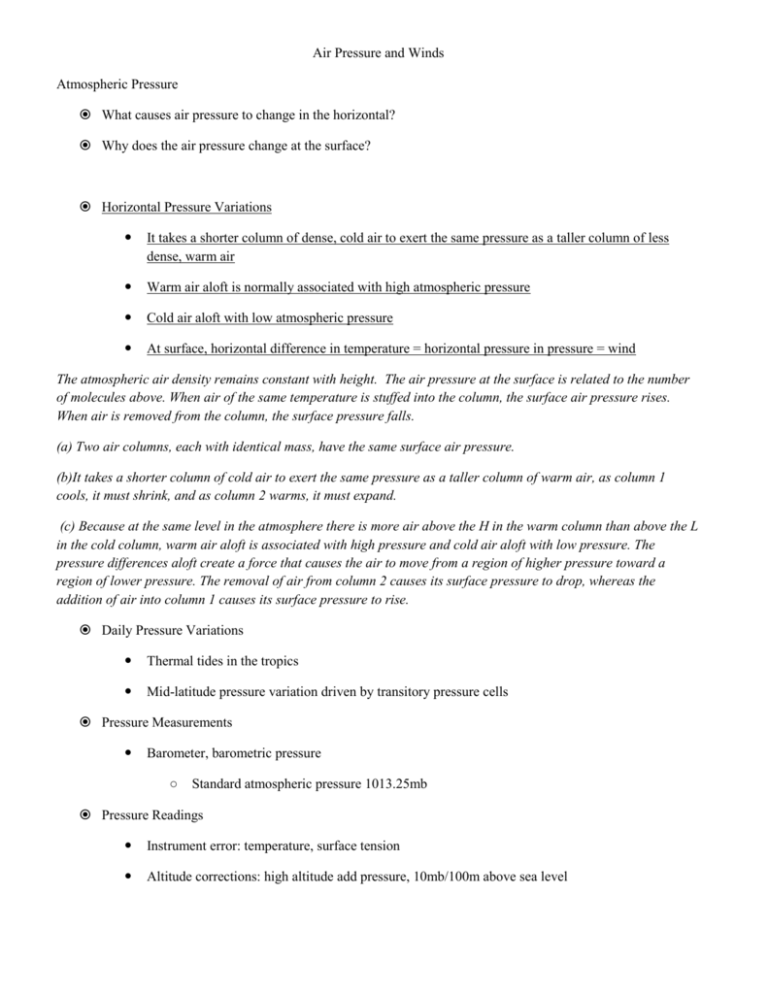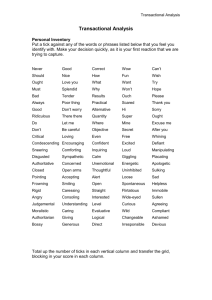Air Pressure and Winds
advertisement

Air Pressure and Winds Atmospheric Pressure What causes air pressure to change in the horizontal? Why does the air pressure change at the surface? Horizontal Pressure Variations It takes a shorter column of dense, cold air to exert the same pressure as a taller column of less dense, warm air Warm air aloft is normally associated with high atmospheric pressure Cold air aloft with low atmospheric pressure At surface, horizontal difference in temperature = horizontal pressure in pressure = wind The atmospheric air density remains constant with height. The air pressure at the surface is related to the number of molecules above. When air of the same temperature is stuffed into the column, the surface air pressure rises. When air is removed from the column, the surface pressure falls. (a) Two air columns, each with identical mass, have the same surface air pressure. (b)It takes a shorter column of cold air to exert the same pressure as a taller column of warm air, as column 1 cools, it must shrink, and as column 2 warms, it must expand. (c) Because at the same level in the atmosphere there is more air above the H in the warm column than above the L in the cold column, warm air aloft is associated with high pressure and cold air aloft with low pressure. The pressure differences aloft create a force that causes the air to move from a region of higher pressure toward a region of lower pressure. The removal of air from column 2 causes its surface pressure to drop, whereas the addition of air into column 1 causes its surface pressure to rise. Daily Pressure Variations Thermal tides in the tropics Mid-latitude pressure variation driven by transitory pressure cells Pressure Measurements Barometer, barometric pressure ○ Standard atmospheric pressure 1013.25mb Pressure Readings Instrument error: temperature, surface tension Altitude corrections: high altitude add pressure, 10mb/100m above sea level Surface level charts are modified to reflect atmospheric pressures AS IF they were at sea level (approximate adjustment: 10mb per 100 meters. a) Pressure at 4 cities. b) Pressure modified to one level (sea level) c) Shows isobars based on one level Surface and Upper Level Charts Sea-level pressure chart: constant height Upper level or isobaric chart: constant pressure surface (i.e. 500mb) High heights correspond to higher than normal pressures at a given latitude and vice versa








